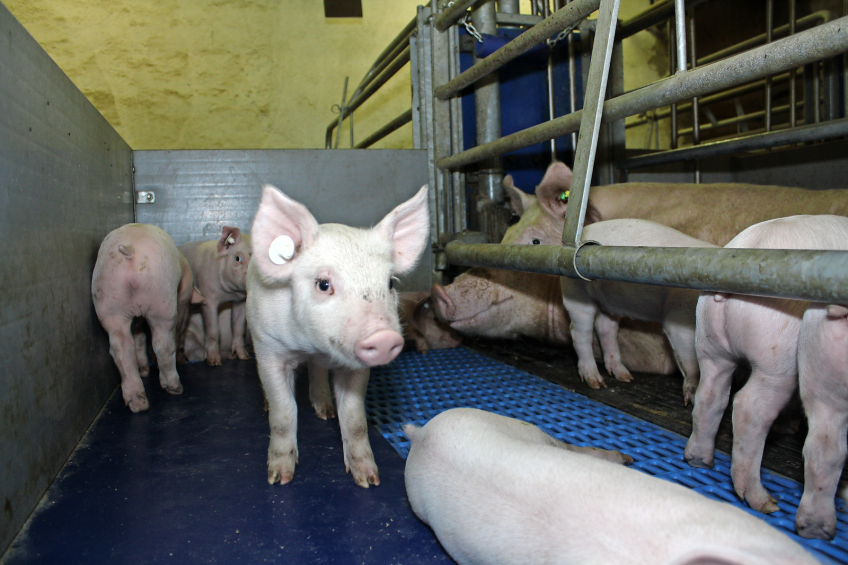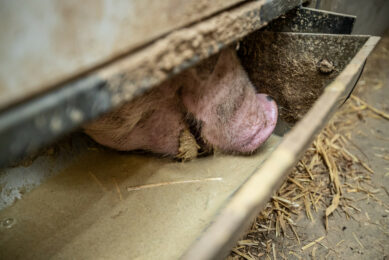Epigenetics: The art of programming DNA

What an animal looks like is not only just determined by its genetic material – it’s also dependent on what happens during its life from the early stages on. This article aims to zoom in on these so-called ?‘epigenetic effects’.
By Dr Peter Spring, Bern University of Applied Sciences, College of Agriculture, Zollikofen, Switzerland
Over the last 20 years incredible advances have been made in analytical techniques and laboratory automation. These novel capabilities have made it possible to map the entire genome of an individual. The possibilities to analyse the genome and the expression of genes have drastically expanded our understanding of genetics and its interaction with nutrition and the environment.
Some of these interactions in the early development of an individual can have lasting effects throughout its life. Several examples in nature show that a reduced flow of nutrients to a foetus will impact its course later in life: A baby, who is born small, has an enhanced risk of developing diabetes later in life than people who are larger at birth. The smallest piglet out of a litter has a limited chance to develop top carcass quality. As the DNA-sequence, the basic system that carries an individual’s genetic information is defined at the moment of fertilisation; mechanisms must exist to add extra information to it during early development.
This addition of information is known as ‘epigenetic effects’. Since these effects can affect health and performance, understanding them is scientifically interesting and managing them is of social and economic importance. These novel research techniques offer great possibilities to understand those interactions in depth and hopefully to develop strategies to overcome and manage them in the future.
Based on his crossing experiments with peas, Gregor Johann Mendel developed the basic understanding of how genetic information is passed from generation to generation. Mendel stated that each individual has two factors for each trait, one from each parent. They are passed on when an individual matures and produces gametes: An egg and sperm. When gametes form, the paired alleles separate randomly so that each gamete receives a copy of one from each parent. When Mendel’s theories were integrated with the chromosome theory of inheritance by Thomas Hunt Morgan in 1915, they became the core of classical genetics. The double stranded DNA is the biological structure these findings are based on.
Mendel already stated that an individual’s physical appearance, or phenotype, is determined by its alleles as well as by its environment. However, what Mendel and the genetic society following him did not elucidate for an epoch is that environmental effects in early development can alter how the genetic information is read from the DNA and used for growth and metabolism and that this imprinting or programming effect can last for life. Thus the information the DNA contains is not limited to the sequence of base pairs which are defined at the moment of fertilisation. Additional information can e.g. be added and stored through methylation on the DNA. This information is based on the nutritional and environmental conditions the animal is exposed to in the uterus and in the neonatal phase. The methylation will later affect how an animal will make use of specific genes (Figure 1).
Worker bee or queen?
It’s long been known that a female bee’s place in the social order – whether she becomes a worker or a queen – depends not on her genes, but on whether she eats royal jelly. The concept that the quality and quantity of food will lead to a difference in size and strength seems logical. Indeed the queen is much larger than all her working sisters. However, the different food does not only affect size; it also leads to the development of the reproductive apparatus and other morphological differences. A recent study found that royalactin, a protein found in royal jelly, is responsible for many of the physical differences that distinguish queens from the worker bee. So the question here is: Is there a royal jelly for a chick or a piglet?
Much research regarding epigenetic mechanisms has been conducted in poultry. Both environmental control mechanisms as well as nutrition show promising results. Birds which were conditioned to heat stress at three days of age, were able to handle hot weather much better later in life. Similarly, several studies do show that broilers can be programmed to utilise calcium and phosphorus more efficiently.
In pigs much of the research regarding epigenetic effects is focusing on the influence of the intrauterine growth of the piglet on its development later in life. Retarded intrauterine growth resulting in low birth weight has negative consequences for the pig up to slaughter. Wu and co-workers summarised key effects of low birth weight in an invited review article in the Journal of Animal Science. Low birth weight significantly enhances piglet mortality peri – and post partum. It also enhances the risk of organ dysfunction and negatively affects performance and carcass quality (see box).
Several studies have shown that low birth weight piglets cannot overcome this bad start. A permanent stunting effect on growth remains throughout life. Low birth weight pigs fail to increase their muscle fibre number and muscle growth during the postnatal period, even when fed adequately. Due to the epigenetic effects, they are not able to increase protein synthesis beyond that of the normal littermates which explains why they do not show compensatory growth. Later in life it is commonly observed that growing animals can react with compensatory growth to a preceding phase of suboptimal nutrition.
As the development in the uterus has a lasting effect on muscle fibre development, it is not surprising to see altered composition of the whole body and muscle later in life. Low birth weight piglets show less muscle but more fat in the carcass. Also differences in connective tissue were reported. This can influence meat tenderness. It seems logical that under-feeding the sow can negatively impact the progeny, however, also over-feeding sows between day 0 and 50 of gestation showed a negative impact. Piglets from such sows had greater content of adipose tissue at birth and at slaughter weight, again showing that some effects are registered at birth and stay with the growing animal.
Even litters
Insufficient uterine capacity and inadequate maternal nutrition are two major factors that impair foetal growth. Limiting uneven litters has to start with genetic selection. Several breeding programmes make use of parameters such as the proportion of underweight piglets or weight variation within the litter.
Those parameters allow selecting against sows which do not offer the uterine environment for even development of the piglets. Selecting against piglet mortality will also push towards a more even litter. Since old sows are more prone to give birth to underweight piglets, its percentage also depends on the age structure of the herd. Different studies show that large weight losses in the suckling period adversely affect the function of the ovaries and thus the quality of the developing follicle. Due to the variable follicle quality the embryos develop unevenly, leading to uneven litters. Particularly during the hot summer months, it is important to take extra measures towards maximising feed intake and animal health. The negative effects of too much condition loss during lactation can partially be corrected directly after weaning. Feeding an additional 150 g of glucose per day between weaning and insemination has been shown to result in more uniform litters.
A positive effect can also be achieved by enhancing the feeding rate during these days or by supplementing the regular diet with piglet feed. By increasing the levels of the two amino acids, arginine and glutamate during gestation piglet quality can also be improved.
However, as long as these amino acids are not available in pure form, the possibilities of increasing those by feed reformulation are limited. A further factor to consider for good foetal development is the oxidative protection. A proper antioxidant cocktail should be applied as a selective intervention strategy in each gestation diet.
Where selenium can help
Novel analytical capacities make it possible to investigate the underlying epigenetic effects and to develop specific intervention strategies. In particular low birth weight has lasting negative effects on the development of the pig. Dietary supplementation of selenium (Se) has shown to enhance placental angiogenesis and foetal growth. The importance of the form of Se in ensuring good embryo development has been investigated by Prof Fortier in Canada. Gilts were fed either a control diet with no added Se or diets with an additional 0.3 ppm Se from either inorganic (sodium selenite) or organic Se (Sel-Plex) up to day 30 of gestation. Those gilts fed the diet containing organic Se had a greater number of living embryos than those fed inorganic Se, and the length, weight and protein and DNA content of the embryos was significantly greater. The Se content of the embryos from gilts fed organic Se was almost double that from gilts fed inorganic Se. These results therefore indicate that dietary organic Se may be critical for an efficient Se transfer to embryos and for their subsequent development in early gestation. This improvement in foetal development has been shown to result in reduced piglet mortality. Over a series of trials, feeding organic Se instead of sodium selenite reduced pre-weaning mortality of piglets by 20%, from 14.5 to 11.6% (Figure 2).
Effects of low birth weight
Organ dysfunction and abnormal development
Performance
– Reduced whole-body and skeletal muscle growth rates
– Decreased skeletal muscle fibre number
– Reduced FCR
Carcass quality
– Increased whole-body and intramuscular fat mass
– Increased connective tissue content
– Reduced meat quality
[Source: Pig Progress magazine Vol 29 nr 7]











